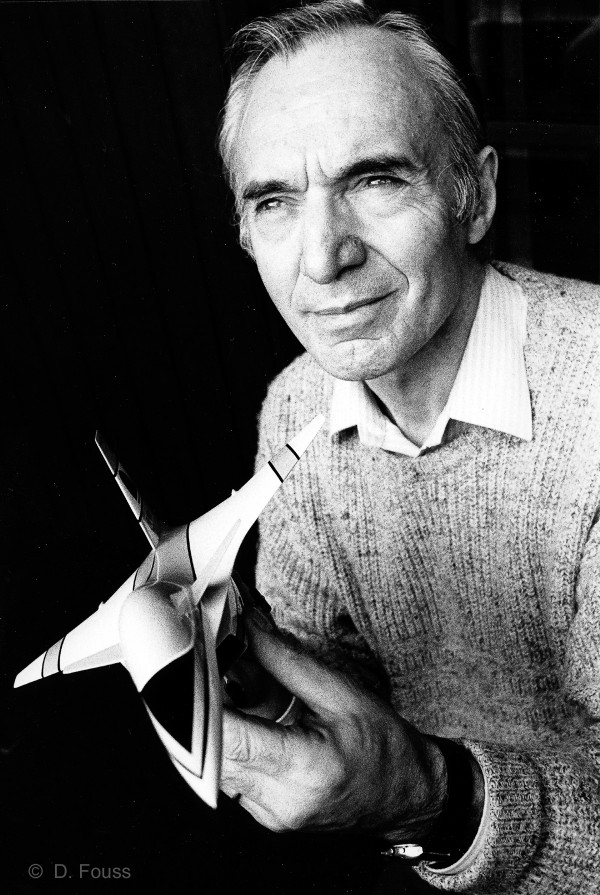
He studies the decorative arts and advertising at the Institut Saint-Luc in Liège. One of the neighbours, the illustrator Jacques Martin, regularly drops in to buy his brilliantine in the hairdresser’s shop owned by Leloup’s parents. In 1950 the talkative visitor mentions that he is looking for an assistant for the holiday period. Unable to suggest one, Leloup offers his own services for the colouring work.
This is how he begins to work on the stories of “Alix” in “L’Île maudite”. When Hergé is commissioned to do technical chromos for the “Voir et savoir” series, Leloup embarks on his first professional project making drawings for “L’Histoire de l’Aviation” as well as the history of cars for which Jacques Martin is hired to supervise the technical part. Leloup works out the engines in pencil, the illustrator inks them, and the master of the work adds the character of “Tintin” in his costume of the moment.
Hergé soon finds it more convenient to have his helping hands all together in Brussels. On 15 February 1953, therefore, Leloup joins the workforce of Studio Hergé, and works on the backgrounds of Alix in “La Griffe noire” until the first frame of “Iorix le Grand”. Hergé especially gives him technical drawings and very accurate decoration, such as the railway station of Genève-Cointrin in “L’Affaire Tournesol”, the wheelchair of captain Haddock in “Les Bijoux de la Castafiore”, cars, motorbikes, tanks, the design of the aeroplane of Carreidas and all the aeroplanes in the new version of “L’Île noire”, chronicles on modelling, etc..
Fifteen years of this work make him want to launch a series of his own. He meets Peyo and tries his hand at a few Schtroumpfs, but his style is more appropriate for adventures and realism. So he assists Francis on an episode of “Jacky et Célestin” and plans a new script for them, which he rewrites for a story of Yoko later on, “L’araignée qui volait”.
On Christmas Eve,1968, he sketches a young herione he would like to introduce into a revived “Jacky et Célestin”. Nothing comes of the project and he decides to further develop her, together with two male foil characters, Vic et Pol, to replace the original duo of Jacky and Célestin. On Christmas Eve,1969, the editor gives him the green light and “Yoko Tsuno” starts her career in SPIROU on 24 September 1970.
On 31 December 1969, Leloup leaves Studio Hergé to devote himself entirely to the development of his series and Yoko has been in his heart and mind ever since. He talks about her as if she is always near him, and has written a novel to depict her childhood (“L’écume de l’aube”, published in 1991 in the “Travelling” collection of Éditions Duculot, later on taken over by Casterman). Shortly before that, Roger Leloup had written his first science fiction novel (“Le Pic des ténèbres”, also in “Travelling”) in which a very pretty android appears, the highly skilled Tyo. He is awarded the much coveted Grand Prix de la Jeunesse SF in 1990.
Roger Leloup really is an all-round author with a double gift for writing and drawing. In his early days, Charles Dupuis had asked him (mistrusting through experience) to appeal to Tillieux for his scripts and dialogues. Having seen two of the complete short stories proposed by the applicant, in which he needed only to replace a word or two purely out of courtesy, the master scriptwriter had considered his supervision totally unnecessary.
Leloup is a pure perfectionist student of the Hergé school, taking the time to revise his new ideas a hundred times, developing one of his numerous spare ideas only when he considers it totally ready.